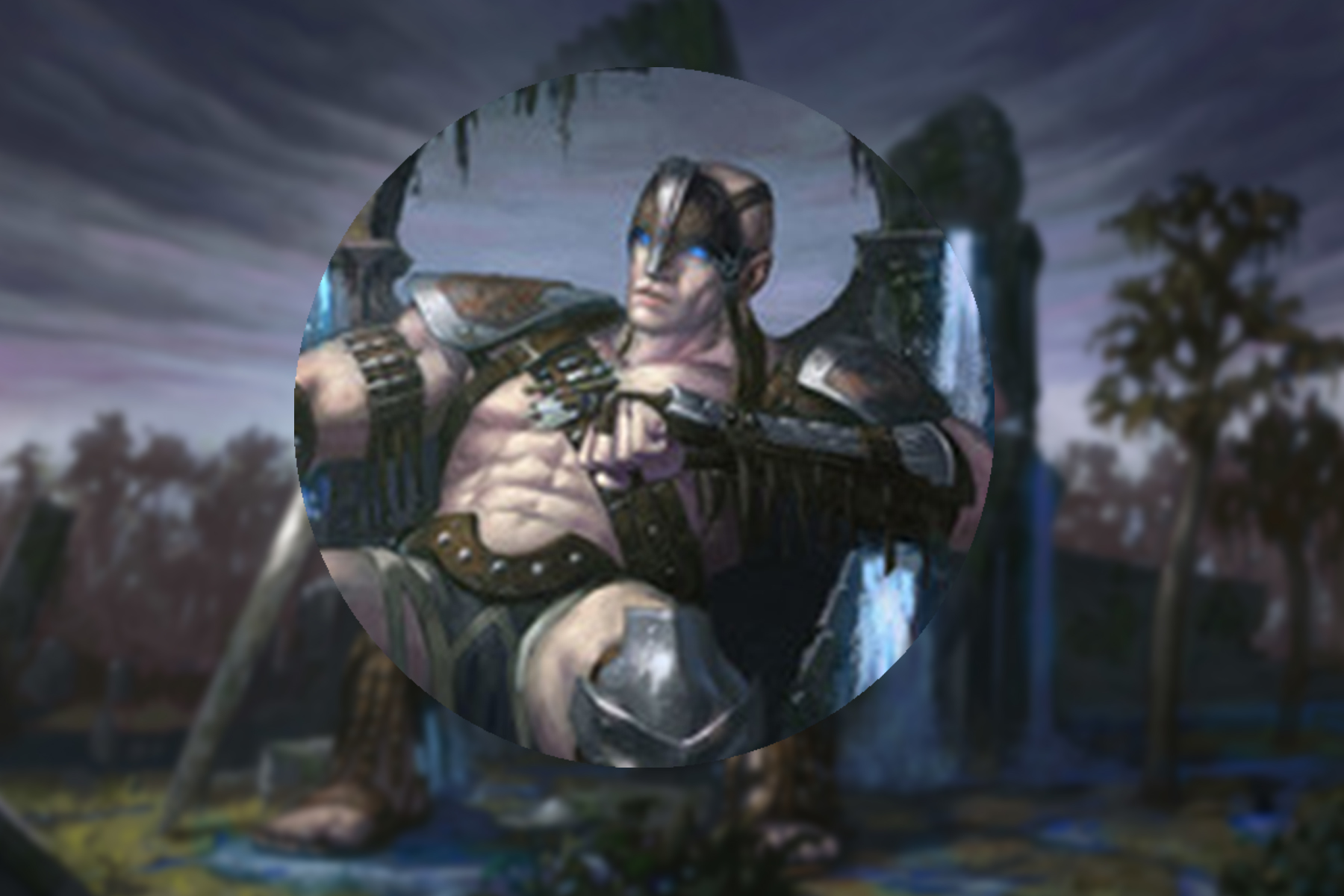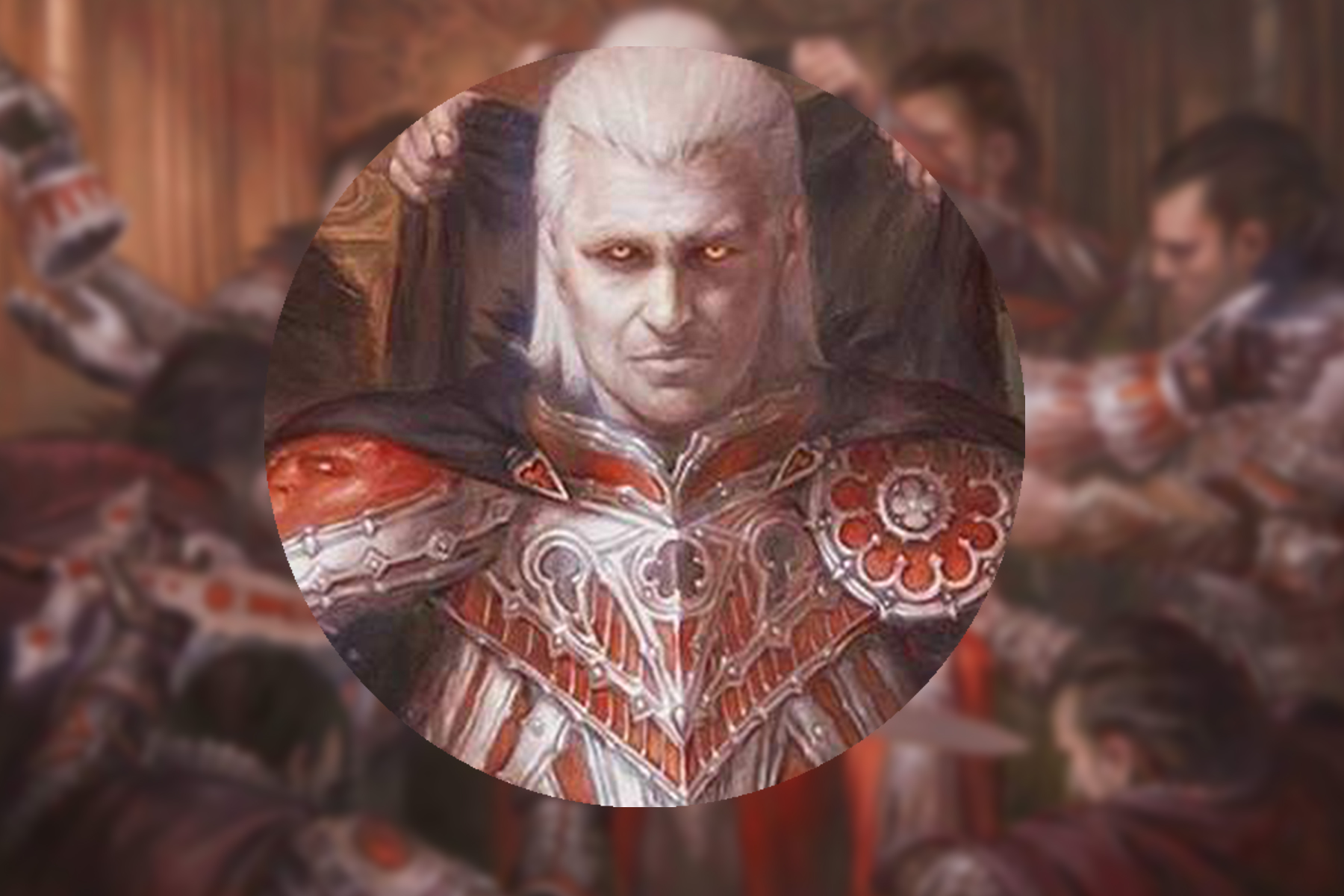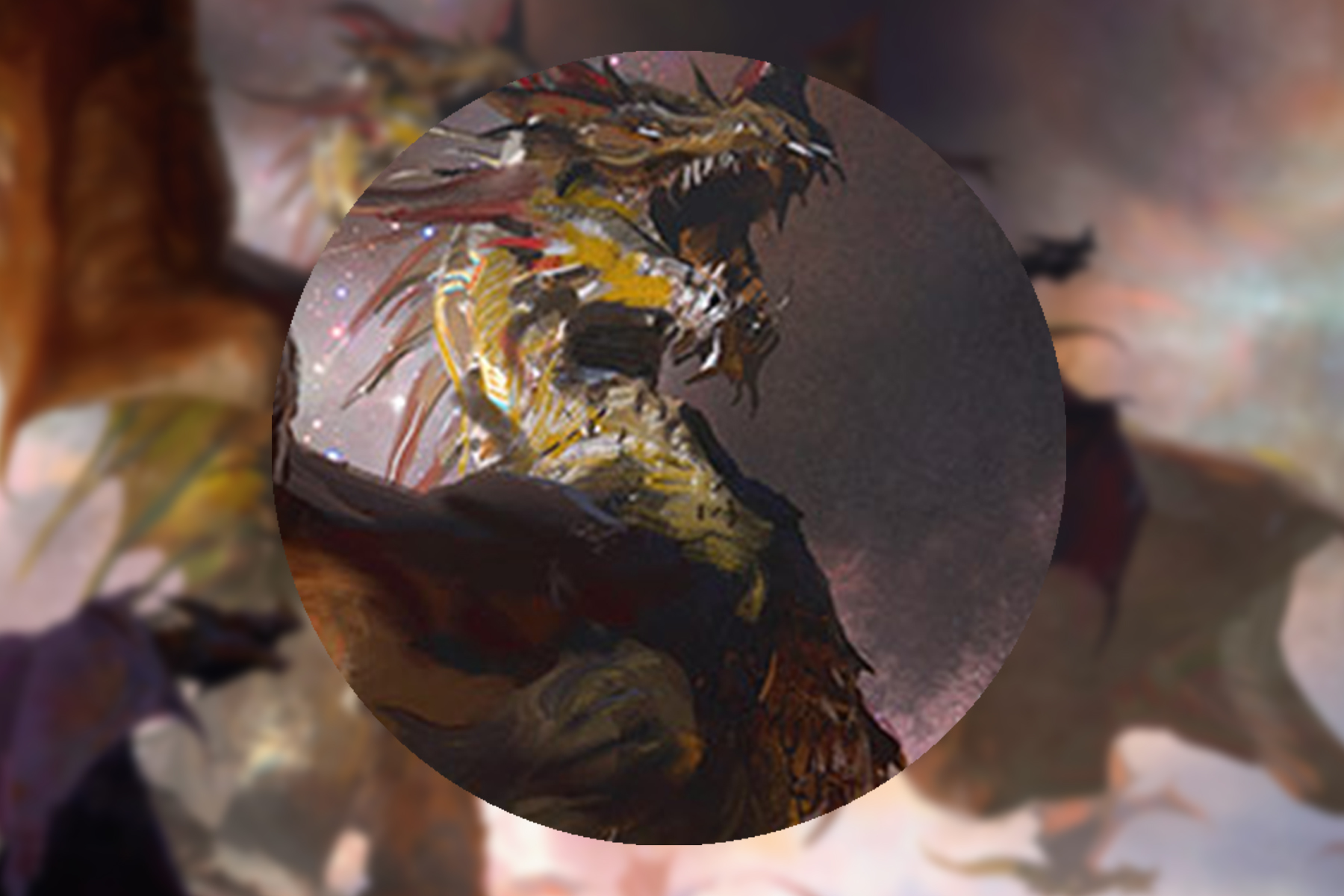About this time last year I made a two-part entry commenting on the less-than-desirable generals of the format. I ran through my six year experience with Commander and all the pitfalls I ran into with my metagames, along with the growth of the Commander community. Looking back, I can see my bias, knotted up in the level of competition my playgroups usually sit at and the chance encounters with players who just had a bad reading of the power level of their deck.
I also realized I overlooked several decks that haunted kitchen tables and game shops: Edric, Spymaster of Trest, Odric, Master Tactician, and most importantly—the jumping off point for today—Oloro, Ageless Ascetic. Admittedly, I didn’t have many problem run-ins with the Giant Monk, or at least nothing that wasn’t manageable by the rest of the table. But he does represent a mechanical space that I’m a little unhappy Wizards decided to dive deeper into, Commander 2017‘s Eminence.

Wrong from the Beginning
In most ways Commander 2013 was an interesting catalyst for the format. It introduced a lot of ideas that could have gone in any number of good or bad directions, such as Nekusar the Mindrazer, True-Name Nemesis, Derevi, Empyrial Tactician, and Prossh, Skyraider of Kher. Oloro wasn’t any worse. With hindsight his existence in the ecosystem meant that decks had to switch gears to properly adapt, but he played as a nice opposite to Nekusar—a deck that defeated the table quickly—by being a deck that simply would never run out of life. His effect on the battlefield meant that, once the right pillow fort was built, he would eventually be cast.
At first glance, I saw the proto-Eminence ability in a similar light to how I first saw artifact lands, Phyrexian mana, or Painter’s Servant. They looked like cool things that would have uses in situations, and overall be a fun inclusion in new decks. The issue that arises from these and likely dozens of other cards is when their use is contorted to an extreme, a blindspot that hit me in the last year.
During my first evaluation of The Ur-Dragon, my imagination instantly went to what I’d do with the attack trigger, seeing the mana reduction as an additional perk. Then looking at Inalla, Archmage Ritualist and imagining how in the endgame, I would cast Rite of Replication on a wizard in play and drain a player out from 14 or more life unexpectedly. But that’s not how Oloro, Ur-Dragon, or Edgar Markov have tended to operate during their tenures.
Often the optimal strategy is to just keep them in your command zone for as long as possible and never build a Inalla deck in the first place. When a mechanic like Eminence asks you to simply never play your general, I have issue with that, probably because I am a curmudgeon who things he knows “the right way” to Commander. But Commander already has the central conceit that you are always guaranteed a card every game. With its existence outside of the game circumventing the singleton nature of the format in many ways, it shouldn’t affect the game without ever being cast.

Soul Sucking
Edgar Markov is a curious case for me. While I appreciate that Wizards gave us an interesting vampire general and set the stage for the introduction of white vampires into Magic proper with Ixalan block, I find this general maddeningly painful to play against. At first glance, I really liked the whole package Edgar brought. His ability helped to make the tribe stronger, while endorsing a very aggressive game plan and giving an iconic race like vampires a very suiting general. Heck, when I was predicting where problems might arise in Commander from the introduction of new Commanders and the change to planeswalkers becoming legendary, I didn’t even have Edgar on my radar.
But as time has gone on, I feel less and less like this abrupt change to the Commander landscape was a net positive. Edgar’s Eminence ability allows for him to start applying pressure from the first time of the game, doubling the spread of bodies and invalidating opening hands that don’t include a board wipe that can be cast by turn four or five.
This juxtaposition is hard for me to grapple with. I certainly want games to be moving towards an end point, and for players to have their decks doing what they are built to do; but often I feel like this overwhelming wave of vampires swarming the battlefield might outclass the intended power level of a preconstructed deck. Unedited, the Vampiric Bloodlust deck is a marvel to behold. Whereas most preconstructed Commander decks Wizards release are a solid four or five out of ten, Edgar represented an untuned deck that can often outplay a tuned deck simply because each creature in the deck represented two bodies. This ultimately makes the Edgar player at any table the de facto “archenemy” until proven otherwise. That was fun for the first few games, but has become distracting as the last year has dragged on.
I do have some sense of hope though. Battlebond gives us the multiplayer minded card Play of the Game, so there is some hope that we may see more spells in the future that can help to foster a sense of even momentary allegiances between players. This deck in all of its forms can be beaten. Opposing decks need to employ more instant-speed effects like Bile Blight or enchantments akin to Illness in the Ranks. But of course, that may be overkill if you don’t expect to run across these decks on a regular basis, and neither of those answers are going to be a catch-all answer with Oloro and The Ur-Dragon still brewing in the background. Your experience may vary.

Consistent Play Patterns
The Ur-Dragon, in some cases, I was very wrong about its effect on the format. Yet in other ways, I just feel underwhelmed by the creativity I’ve seen thus far using it. This goes again my blind spot. I often look at cards and imagine all the off-the-wall “fun” things I can do with a spells and often don’t see the most efficient use that derives the most consistent game plan. I would rather helm a deck with Jodah, Archmage Eternal where possibilities are endless over Jhoira, Weatherlight Captain, who feels too linear and consistent. Or better yet, short of the copies of Jace, the Mind Sculptor, I had 71 of the 75 cards needed to play Caw-Blade in 2011 and chose to sleeve up Hedron Crab mill for my Friday Night Magic experiences.
To me, the ability to sneak a permanent into play had far more value than reducing the cost of dragons by a single generic mana. What a fool I was. My issue with The Ur-Dragon has not been the power level I thought it might achieve—in fact it’s not even the de facto dragon commander—but the lack of explosive plays and creativity I hoped to see. When I said this deck was going to become an issue, it was because I predicted the mad scientists of the format would uncover something truly unique and powerful that would be enabled. That just hasn’t happened yet.
I feel that starting the game with a free Urza’s Incubator “emblem” always set to dragons enabled a cool deck, but warped people’s gameplay. In surveying a few Ur-Dragon players I know if the real and online, the general consensus was that the free value of having their general in the command zone was worth more than possibly losing it to a Control Magic or Lignify effect. Thus, the only way to really fight this deck is to remove it before it gets out of control.
I can enjoy games against The Ur-Dragon, but it has to be at a table that wants to be play their most tuned decks, or asking that the dragon player pull some punches. That’s something I don’t often like asking of other players. I don’t know where the answer lies here. It may be only a symptom in my metagame and the ones I hear about through the grapevines, but what I see doesn’t leave me excited by the results of a year of brewers brewing.
Eminence Post Mortem
Depending on where you stand, last year’s Commander product wasn’t all format warping. The opposite side of the coin is that while the Dragon and Vampire tribes got energized to varying degrees, the Wizard and Cat tribes were left as something more forgettable in terms of their marquee generals. Wizards was more remembered for the new generals within the other 99, and less for a general whose ability was wisely engineered to not be game breaking. The Cats deck on the other hand seems to be completely dismissed outside of fans of the tribe. People often voice confusion as to why the tribe was picked and I’ve never gotten the sense that much inspiration was spawned from Arahbo, Roar of the World. I have wondered if Balan, Wandering Knight or Nazahn, Revered Bladesmith have something great waiting just below the surface.
As a whole, I think all four decks have their merits. Its just the marquee mechanic, which I think was developed with good intentions, that didn’t pay off. While many people have taken issue with Oloro over the years, I only can complain when an early Felidar Sovereign or Test of Endurance has ended a reasonably started game. I feel similarly with Edgar. Games become so explosive that they never reach the level of fun I look for from the format. And Ur-Dragon lacks the untapped creativity I hoped it would foster.
All three of these generals might be improved in gameplay if their command zone ability wasn’t turned on from turn one, by requiring them to be cast at least once before they took shape. I understand that creatures should not be creating emblems, which should be saved for planeswalkers; but I do think there is a design space to further develop the ideas we’ve been playing around with since 2013. The next exploration of the mechanic should consider the possible twists on play patterns they could endorse.
My hope is that my experience, along with the accounts I have witnessed online and real life, are not the same as the perspectives of newer players entering into the format. That without the pride and cynical nature prone to more experience players, they see four tribal decks that do interesting things and support tribes important to them. Until next week, find me on Twitter and share your thoughts on last year’s marquee mechanic.

